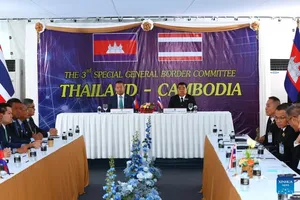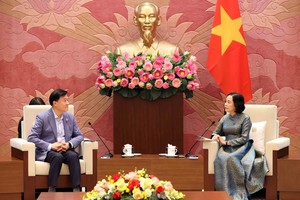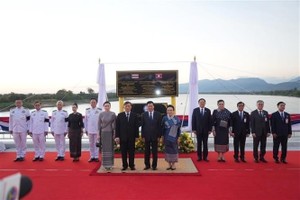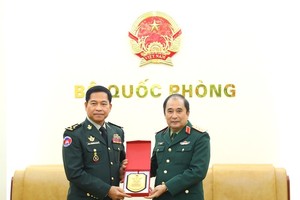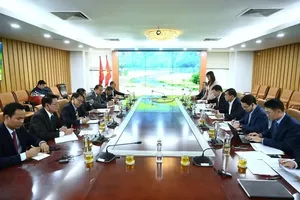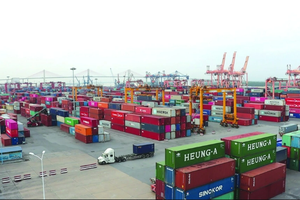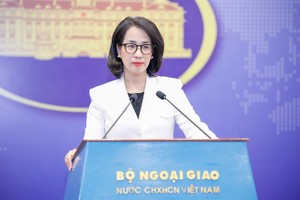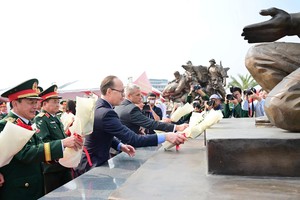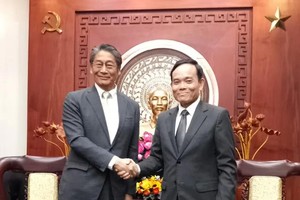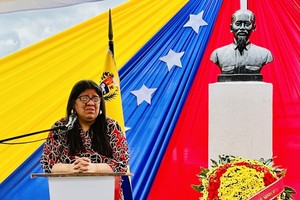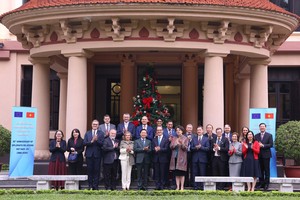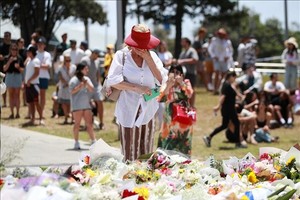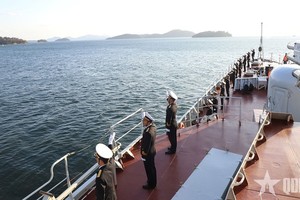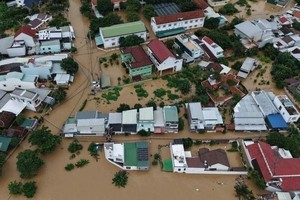SEOUL, March 28, 2010 (AFP) - Ships and aircraft searched choppy seas Saturday for survivors of one of South Korea's worst naval disasters, but hopes faded for 46 missing after an unexplained explosion tore a warship in half.
The tragedy happened near the tense disputed Yellow Sea border with North Korea, scene of bloody naval clashes in 1999 and 2002. Seoul's officials said there was no sign so far the North was to blame.
President Lee Myung-Bak called emergency security meetings and ordered a swift and thorough probe into the sinking on Friday evening of the 1,200-tonne corvette near Baengnyeong island.
Details of the disaster began to emerge Saturday.
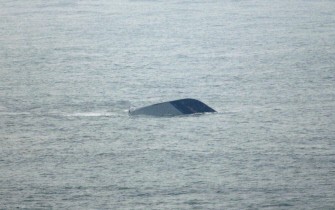
"The ship was torn apart and the stern sank immediately," Choi Won-Il, captain of the Cheonan, told relatives of those missing.
"While I was reviewing an operation plan in my cabin, there was the sound of an explosion and the ship keeled to the right. We lost power and telecommunications," Yonhap news agency quoted him as saying.
"I was trapped in the cabin for five minutes before my colleagues broke the window in and let me out. When I got out, the stern had disappeared."
The Joint Chiefs of Staff (JCS) said 58 sailors had been rescued but 46 were missing. Thirteen of those saved were injured but in stable condition.
"Many of the missing people might have been trapped inside the sunken ship," JCS spokesman Lee Ki-Sik told a parliamentary committee.
A team of 18 navy divers had to postpone an attempt to search the craft until Sunday because of high waves and darkness.
Defence Minister Kim Tae-Young said thermal images indicated the ship had been torn in half. "But we have to pull her up to determine the exact cause," he said, adding a salvage ship would arrive Sunday afternoon.
Reports said the 88-metre (290-foot) craft would have been carrying missiles, torpedoes and other weaponry and munitions. However survivors believe the impact came from outside, according to defence ministry spokesman Won Tae-Jae.
"The possibility of the ship having been attacked will be investigated along with other possibilities," Won said.
The military said there were no abnormal military movements at the time on the North Korean side of the maritime border. "We are detecting no abnormal movement from North Korea," JCS spokesman Park Sung-Woo said.
JCS officer Lee Ki-Shik said the military was "very cautious about pointing fingers at North Korea or any other causes at the moment."
Baek Seung-Joo of the Korea Institute for Defence Analyses told AFP the government appeared to suspect an accident rather than sabotage.
Kim Jin-Ho, a seaman on a local passenger ship that was bound for Baengnyeong, described Friday evening's horrific scene to YTN television.
"Survivors were screaming for help," Kim said. "As the ship was sinking, they were hanging onto the front part of the deck, shouting: 'Save me!'"
Hopes for the missing were fading with each hour as the temperature in the area at the time was about 37 degrees Fahrenheit (three degrees Celsius).
President Lee, who summoned an emergency security meeting immediately after the sinking, called two more sessions on Saturday.
He ordered a "thorough and swift probe" into the cause of the sinking, "keeping all windows of possibility open," a spokeswoman said.
In Washington, the State Department said it had no evidence of North Korean involvement.
UN Secretary-General Ban Ki-Moon, who is South Korean, expressed his condolences "to the families of the victims, and to the government and people of the Republic of Korea," his office said.
Last November the navies of the two Koreas exchanged fire in the area and a North Korean patrol boat retreated in flames with unknown casualties.
The two Koreas have remained technically at war since their 1950-1953 conflict ended only in an armistice.
The North refuses to accept the maritime border known as the Northern Limit Line, which was drawn up by United Nations forces after the war. It says the line should run further to the south.
